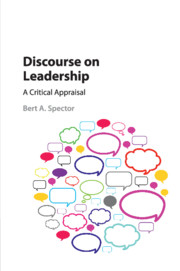Book contents
- Discourse on Leadership
- Discourse on Leadership
- Copyright page
- Dedication
- Contents
- Book part
- Prologue: A Discussion without End and the Nature of This Inquiry
- 1 The GreatMan and the Beginning of Contemporary Discourse
- 2 MoreWho than Do and the Trait versus Behavior Debate
- 3 Whistling in the Dark and the Insertion of Power between Followersand Leaders
- 4 TheSublime Myth and the Ideology of Purpose
- 5 (White)Men Named John and the Persistence of Bias
- 6 No LongerJustManaging and theMisuse of Ideal Types
- 7 Globalizationand the Challenge of Complexity
- Epilogue: Key Moments in Leadership Discourse and a Plausible Chronological Narrative
- References
- Index
- References
References
Published online by Cambridge University Press: 05 July 2016
- Discourse on Leadership
- Discourse on Leadership
- Copyright page
- Dedication
- Contents
- Book part
- Prologue: A Discussion without End and the Nature of This Inquiry
- 1 The GreatMan and the Beginning of Contemporary Discourse
- 2 MoreWho than Do and the Trait versus Behavior Debate
- 3 Whistling in the Dark and the Insertion of Power between Followersand Leaders
- 4 TheSublime Myth and the Ideology of Purpose
- 5 (White)Men Named John and the Persistence of Bias
- 6 No LongerJustManaging and theMisuse of Ideal Types
- 7 Globalizationand the Challenge of Complexity
- Epilogue: Key Moments in Leadership Discourse and a Plausible Chronological Narrative
- References
- Index
- References
- Type
- Chapter
- Information
- Discourse on LeadershipA Critical Appraisal, pp. 257 - 297Publisher: Cambridge University PressPrint publication year: 2016



